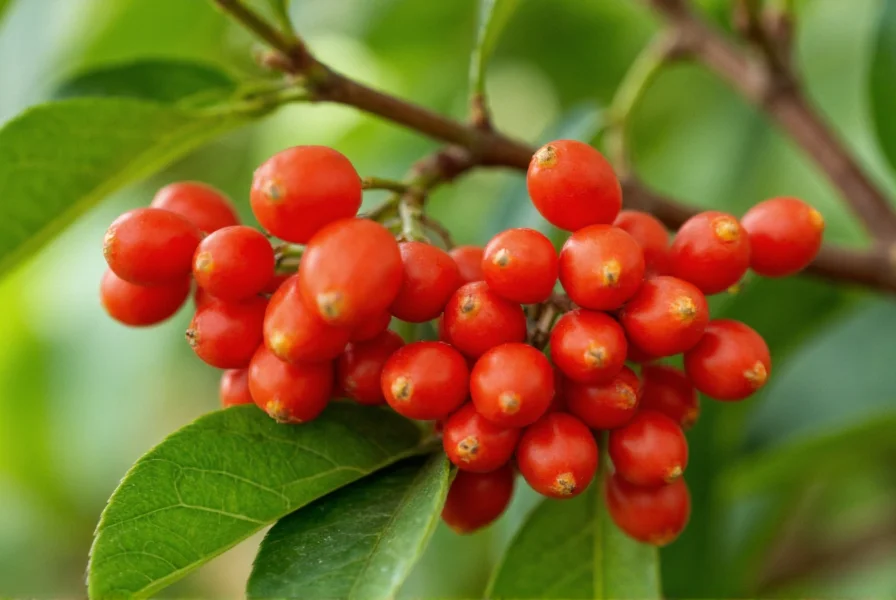When people search for pepper trees information, they often mistakenly believe these ornamental trees produce culinary black pepper. The reality is quite different: Schinus species, commonly called "California pepper trees" or "Brazilian pepper trees," belong to the cashew family (Anacardiaceae) and have significant ecological impacts where introduced.
Understanding True Pepper vs. Ornamental Pepper Trees
Many gardeners confuse Schinus species with Piper nigrum, the vine that produces actual black, white, and green peppercorns. While both have "pepper" in their common names, they're botanically unrelated. True pepper requires tropical conditions to thrive, whereas ornamental pepper trees tolerate semi-arid climates, explaining their popularity in landscaping across warmer US regions.
Key Characteristics of Common Pepper Tree Species
| Species | Common Name | Height | Key Features | Invasive Status |
|---|---|---|---|---|
| Schinus molle | Peruvian Pepper Tree | 25-45 ft | Pendulous branches, gray-green leaves, pink berries | Invasive in CA, FL, TX, AZ |
| Schinus terebinthifolius | Brazilian Pepper Tree | 15-30 ft | Dense canopy, red berries, stronger invasiveness | Category I invasive in FL |
Growing Conditions and Care Requirements
For those considering pepper tree planting guidance, these trees thrive in USDA zones 9-11 with full sun exposure. They tolerate various soil types but prefer well-draining conditions. While drought-tolerant once established, young trees benefit from regular watering during their first two years. Proper pepper tree pruning techniques involve removing dead wood and maintaining structure, but avoid excessive pruning which can stimulate aggressive regrowth.
Many homeowners seek pepper tree maintenance tips after discovering these trees' problematic characteristics. Their extensive root systems can damage sidewalks and underground utilities, while the berries create significant litter. The trees also produce allelopathic chemicals that inhibit growth of other plants beneath them—a survival mechanism that contributes to their invasiveness.
Environmental Impact and Invasive Species Concerns
The question are pepper trees invasive has a definitive answer: yes, in many ecosystems. Brazilian pepper trees (Schinus terebinthifolius) are particularly problematic, forming dense monocultures that displace native vegetation across Florida's wetlands. California has similarly struggled with Peruvian pepper trees colonizing riparian areas. These trees' rapid growth, high seed production, and adaptability to disturbed sites make them formidable invaders.
Local governments often provide pepper tree removal guidelines for property owners. Complete eradication requires removing the entire root system, as cut stumps readily resprout. Herbicide application to freshly cut stumps may be necessary for effective control, though this should be done following local environmental regulations.
Health Considerations and Allergy Concerns
Individuals researching pepper tree allergy symptoms should know these trees produce significant pollen during late fall and winter. The pollen can trigger respiratory issues in sensitive individuals, while contact with sap may cause skin irritation similar to poison ivy due to related chemical compounds. Those with cashew or mango allergies often experience cross-reactivity with Schinus species.

Responsible Alternatives for Landscaping
When seeking non-invasive pepper tree alternatives, consider these native options that provide similar aesthetic benefits without ecological harm:
- Western redbud (Cercis occidentalis) - Native to California with pink spring flowers
- Desert willow (Chilopsis linearis) - Drought-tolerant with willow-like leaves and trumpet flowers
- California sycamore (Platanus racemosa) - Provides similar shade with ecological benefits
Municipal extension offices often maintain lists of approved landscaping trees for specific regions. Consulting these resources before planting prevents future ecological problems and potential removal costs.
Conclusion: Balancing Beauty and Responsibility
While ornamental pepper tree characteristics make them attractive landscape choices, their invasive potential and ecological impact necessitate careful consideration. Property owners with existing pepper trees should implement proper management practices, including regular pruning and seed control. For new plantings, selecting regionally appropriate native species provides beauty without threatening local ecosystems—a crucial factor in sustainable landscaping decisions.
Are pepper trees related to black pepper plants?
No, ornamental pepper trees (Schinus species) belong to the cashew family and are not related to true pepper plants (Piper nigrum). Despite their common name, Schinus trees do not produce edible peppercorns and their berries can cause stomach upset if ingested.
Why are pepper trees considered invasive?
Pepper trees spread aggressively through bird-dispersed seeds, form dense thickets that shade out native plants, and release chemicals that inhibit growth of competing vegetation. Their extensive root systems also damage infrastructure, making them problematic in urban and natural environments alike.
Can I legally remove a pepper tree on my property?
Removal regulations vary by location. Some municipalities require permits for tree removal, while others encourage removal of invasive species. Always check with your local agricultural extension office or city planning department before removing any tree, as certain areas have heritage tree protections that may apply.
Do pepper trees cause allergies?
Yes, pepper trees produce significant pollen during fall and winter months that can trigger allergic reactions. Additionally, contact with the sap may cause contact dermatitis in sensitive individuals, particularly those with allergies to other Anacardiaceae family plants like poison ivy, mango, or cashew.










 浙公网安备
33010002000092号
浙公网安备
33010002000092号 浙B2-20120091-4
浙B2-20120091-4